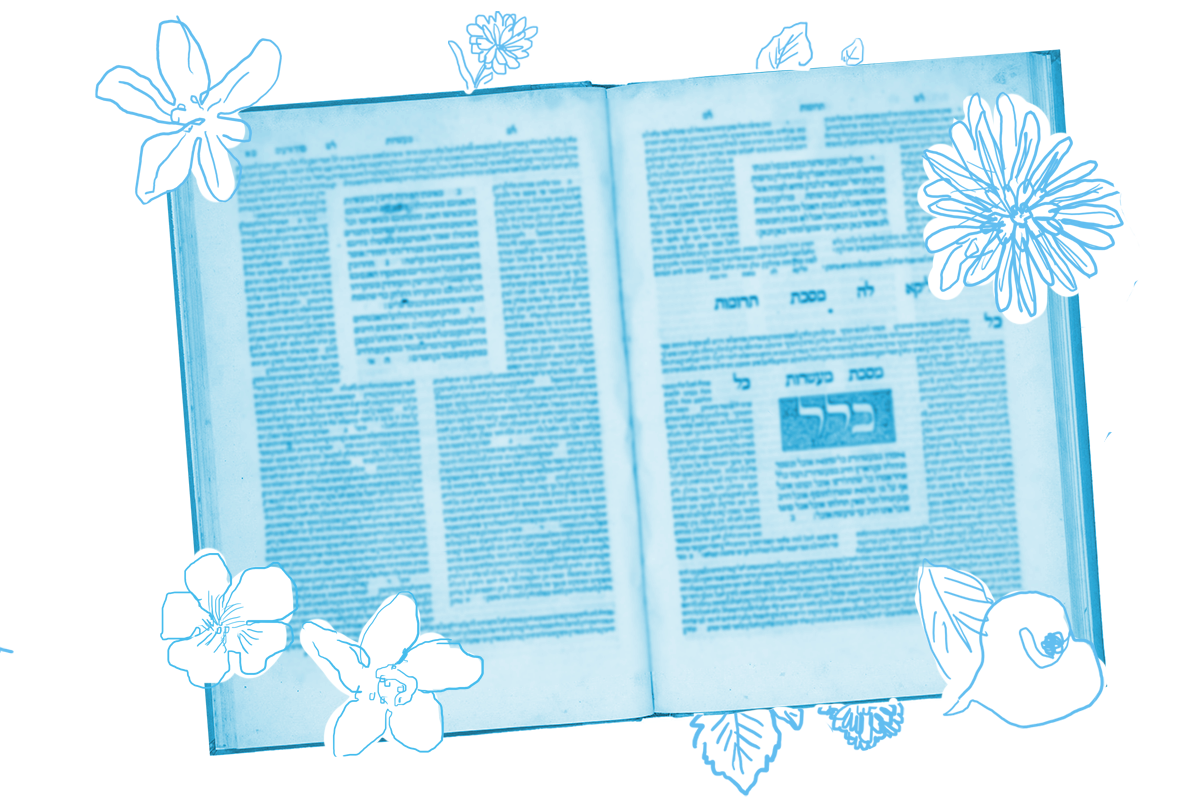The fifth chapter of Nedarim begins on page 45b with the following mishnah:
Partners who vowed not to derive benefit from one another are prohibited from entering a courtyard (that they jointly own).
Rabbi Eliezer ben Ya’akov says: It is permitted, as this one enters into his own portion and that one enters into his own portion.
And, with that, a mere 21 words, page 45b ends. Why so short?
With your help, My Jewish Learning can provide endless opportunities for learning, connection and discovery.
When the Talmud was printed for the first time in the 15th century, the printers laid out the text surrounded by multiple commentaries. The length of the talmudic passage on each page, therefore, is inversely proportional to the length of the commentaries that accompany it.
Today’s page has so little Talmud because it includes a rather lengthy comment by the 14th-century Sephardic commentator Rabbeinu Nissim (also known by his initials as the RaN) about the opening sentence of the mishnah. The bulk of the Ran’s commentary is rooted in a discussion from Bava Kamma 51 about this dispute:
There (in Bava Kamma) this disagreement is understood to be about whether there is retroactive clarification or not. Rabbi Eliezer thinks that there is, so that when one of the partners enters the courtyard, wherever they go becomes their section of the courtyard, and the rabbis think that such retroactive clarification is not possible.
If the owners have not previously designated which part of the courtyard they each own, there is a question about whether the restricted partner is forbidden from entering the courtyard because the vowing partner is part owner of the entire courtyard.
In this read of the mishnah, Rabbi Eliezer says he may enter because he believes that the restricted partner can retroactively clarify which part of the courtyard is theirs. This allows them to enter the courtyard without benefiting from their partner because the sections of the courtyard that they traverse will become designated as theirs. The rabbis disagree. The concept of b’reirah, retroactive designation, is a complex one, as is its intersection with our mishnah — thus, the Ran’s commentary fills the page.
Not only is the length of Rabbeinu Nissim’s comment unusual, his appearance on the page at all might be unexpected. Printed talmudic pages usually feature the commentary of Rashi printed on the inside margin to keep it safer from wear and tear, and the Tosafot (his intellectual heirs, including some of his grandsons) printed on the outside margin. But on today’s page, the Ran’s commentary appears on the outside margin (where Tosafot usually is) and Tosafot have been relegated to the outer, outer margin near the bottom of the page.
This rearrangement is not unique to today’s page, but has been consistent for all of Tractate Nedarim. What accounts for this change from the standard format? Likely, it has to do with Rashi’s commentary on the tractate, which is almost certainly not his.
If you take a look back at Nedarm 22b, you’ll notice a boldface insertion in regular Hebrew font (instead of the special font, named for Rashi, in which his commentary is printed) which tells us that from this point on Rashi’s commentary is missing and what follows was copied from the commentary of Rabbeinu Gershon. In fact, there are a number of tractates in which similar notes appear, informing readers that Rashi’s commentary is being completed by another. One of the handwritten manuscripts of Bava Batra 29a even reads, “Here Rashi died,” suggesting, perhaps, that Rashi was working on his commentary up until the moment of his last breath.
It’s the consensus of talmudic scholarship that none of the commentary labeled Rashi in Tractate Nedarim was in fact authored by him. (Likewise Ta’anit, Moed Katan and Nazir.) Nathan Hirsch points out that the title page to the first (1522) printed edition of Nedarim by Daniel Bomberg of Venice indicates that the volume includes “three different commentaries” rather than the standard “with the commentary of Rashi and Tosafot.” Bomberg’s note explains that due to “crucial deficiencies” the commentary of the Tosafot has been moved to the back pages of the volume and makes no mention of Rashi. As there is no evidence that there ever was Rashi to Nedarim and the Tosafot text was problematic, Hirsch explains that Bomberg included the Ran, the Rosh, and a third anonymous commentary to fill the gap. Subsequent editions label the anonymous third commentary as Rashi.
Read all of Nedarim 45 on Sefaria.
This piece originally appeared in a My Jewish Learning Daf Yomi email newsletter sent on December 9th, 2022. If you are interested in receiving the newsletter, sign up here.



